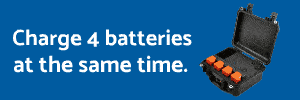I removed the ND 4 filter yesterday and I feel I get a better picture without it. I may have a set of bad filters but I have had problems getting what I want in a video with them.
You are using an out of date browser. It may not display this or other websites correctly.
You should upgrade or use an alternative browser.
You should upgrade or use an alternative browser.
No Filter
- Thread starter rkyleh
- Start date
Jagerbomb52
Well-Known Member
Know how and when to use filters is not something you learn overnight. Where you have been flying with all the dark ground colors and blue skies I would agree it looks better without a filter. If you fly around water on a bright sunny day you might want to consider a ND filter. Being winter here and all that white snow some kind of ND filter I feel helps.
Getting that stand still waterfall effect is another reason to use a filter. Getting that prop shadow out of the video is another reason.
Don't give up on filters just adjust when to use them.
Getting that stand still waterfall effect is another reason to use a filter. Getting that prop shadow out of the video is another reason.
Don't give up on filters just adjust when to use them.
I finally realized that this set of filters are the polarizer type. It is no wonder I get different results all the time. I just ordered a set of Neewer ND filters maybe that will help.
Jagerbomb52
Well-Known Member
I finally realized that this set of filters are the polarizer type. It is no wonder I get different results all the time. I just ordered a set of Neewer ND filters maybe that will help.
Ya the polarizer ones have to be set each flight from my understanding. I bought just the regular ones. I have talked to Michael Kienitz a well known video\photographer for over 40 years. He was convince ND polarized filters had no place in drone photography as your angle is always changing. It wasn't till he started doing documentaries in Iceland on global warming that he started using filters because of all the white ice\snow.
So even a photojournalist of 40 plus years and teaches photojournalism in the School of Journalism at the University of Wisconsin, Madison has a hard time figuring out when to use filters its good to know we are not alone LOL
The embarrassing part is I know better. I have used Polarizer filters on cameras for years. They have to be adjusted for every shot there is no way they will work on a UAV. I wanted the ND because there are a lot of these dry river beds I fly in that the rocks are white and I need some help there. I can see where your at they would be essential.Ya the polarizer ones have to be set each flight from my understanding. I bought just the regular ones. I have talked to Michael Kienitz a well known video\photographer for over 40 years. He was convince ND polarized filters had no place in drone photography as your angle is always changing. It wasn't till he started doing documentaries in Iceland on global warming that he started using filters because of all the white ice\snow.
So even a photojournalist of 40 plus years and teaches photojournalism in the School of Journalism at the University of Wisconsin, Madison has a hard time figuring out when to use filters its good to know we are not alone LOL
KentA
Well-Known Member
Augustine,
Thanks for the link to Michael Kienitz. I think I watched all his drone videos.
rkyleh,
Thanks for another perspective of the wild west.
Thanks for the link to Michael Kienitz. I think I watched all his drone videos.
rkyleh,
Thanks for another perspective of the wild west.
Last edited:
HiloHawaiian
Well-Known Member
Polarizers can work on drones, if you’re carful. Filtering-out the blue from foliage gives plants and trees richer color, and postcard-blue skies. But, you’re restricted to certain shooting angles. Shooting straight down on coastlines, PL filters see through water giving you rich aquas in tide pools and shallows.
I use one on almost every flight in daylight, unless there’s a situation requiring an ND filter. I rotate the PL filter for max effect prior to take off, pointing it in the direction I want to shoot. It works well most of the time...
I use one on almost every flight in daylight, unless there’s a situation requiring an ND filter. I rotate the PL filter for max effect prior to take off, pointing it in the direction I want to shoot. It works well most of the time...
Last edited:
Polarizers can work on drones, if you’re carful. Filtering-out the blue from foliage gives plants and trees richer color, and postcard-blue skies. But, you’re restricted to certain shooting angles. Shooting straight down on coastlines, PL filters see through water giving you rich aquas in tide pools and shallows.
I use one on almost every flight in daylight, unless there’s a situation requiring an ND filter. I rotate the PL filter for max effect prior to take off, pointing it in the direction I want to shoot. It works well most of the time...
I agree on what you say that they will work if set right. The problem I have is I wander when I shoot always looking for something else and not holding the course. Good advice on looking down at water I will keep these PL filters in case I ever run across a body of water where I can get my feet wet.
By applying a polarizing filter, the energy of the light along one axis can only pass through, hence why the filtering effect works best when the sun is at right angles to the direction the photo is being taken, and the sky will appear to be darker blue in color.
If the sun is in front or behind the photographer, the polarizing filter will make no difference because the axis of oscillation will not be filtered by the Polaroid, and thus no effect will be seen.
This is why I have problems I go from a shot that has rich blue sky to one that is pale blue. I am not disciplined enough to use them right. I have a set of ND filters coming maybe that will help this stark landscape I shoot in. Photography and flying it doesn't get much better than this.
HiloHawaiian
Well-Known Member
Exactly right. I decided not to get too technical,I agree on what you say that they will work if set right. The problem I have is I wander when I shoot always looking for something else and not holding the course. Good advice on looking down at water I will keep these PL filters in case I ever run across a body of water where I can get my feet wet.
By applying a polarizing filter, the energy of the light along one axis can only pass through, hence why the filtering effect works best when the sun is at right angles to the direction the photo is being taken, and the sky will appear to be darker blue in color.
If the sun is in front or behind the photographer, the polarizing filter will make no difference because the axis of oscillation will not be filtered by the Polaroid, and thus no effect will be seen.
This is why I have problems I go from a shot that has rich blue sky to one that is pale blue. I am not disciplined enough to use them right. I have a set of ND filters coming maybe that will help this stark landscape I shoot in. Photography and flying it doesn't get much better than this.
Drones are a fun hobby. I approach each flight the same way I approach a shoot, with a plan. I need 15-30 seconds of good footage of one targeted area. Time of day and sun angle play a big part of any flight plan. After I shoot my planned shot 10 times, I might have 10 min. of battery left, so I freelance. That’s where polarization can give you inconsistencies. I often adjust my exposure to try and compensate, with mixed results. I’m trying to assemble good footage of this huge island for a 10-12min vid, and 80% is shot w/ a PL.
Last edited:
Exactly right. I decided not to get too technical,, your explanation is spot-on. I made a living in corporate photography/videography for 35 years. Results were all that mattered. Almost every outdoor shoot that wasn’t a portrait, I used a PL filter. I’m semi-retired, but still do some work in California.
Drones are a fun hobby. I approach each flight the same way I approach a shoot, with a plan. I need 15-30 seconds of good footage of one targeted area. Time of day and sun angle play a big part of any flight plan. After I shoot my planned shot 10 times, I might have 10 min. of battery left, so I freelance. That’s where polarization can give you inconsistencies. I often adjust my exposure to try and compensate, with mixed results. I’m trying to assemble good footage of this huge island for a 10-12min vid, and 80% is shot w/ a PL.
I may have to develop some discipline when it comes to using the PL filters. I know they can make some great shots. I will have to approach filming videos a little differently than the random wanderings I do know. Good luck with the video you live in a beautiful place. I was there in 1957 thanks to Uncle Sam.
HiloHawaiian
Well-Known Member
This is really true. Unless you seriously studied advanced B&W photography in school, filters just weren’t emphasized much besides Ansel sometimes used a red filter for dark skies. You had to learn about their use yourself, as necessary...Ya the polarizer ones have to be set each flight from my understanding. I bought just the regular ones. I have talked to Michael Kienitz a well known video\photographer for over 40 years. He was convince ND polarized filters had no place in drone photography as your angle is always changing. It wasn't till he started doing documentaries in Iceland on global warming that he started using filters because of all the white ice\snow.
So even a photojournalist of 40 plus years and teaches photojournalism in the School of Journalism at the University of Wisconsin, Madison has a hard time figuring out when to use filters its good to know we are not alone LOL
I don’t know jack about ND filters, I never had an occasion to use them until the XSP gave me jellied skies in bright situations. I’ve learned more about them on this forum than anywhere else, and I still have much to learn...
Similar threads
- Replies
- 0
- Views
- 534
- Replies
- 0
- Views
- 718
- Replies
- 2
- Views
- 828
- Replies
- 8
- Views
- 1K
Latest threads
-
-
-
what is the procedure for replacement with serial number change?
- Started by mhassell
- Replies: 0
-
-





